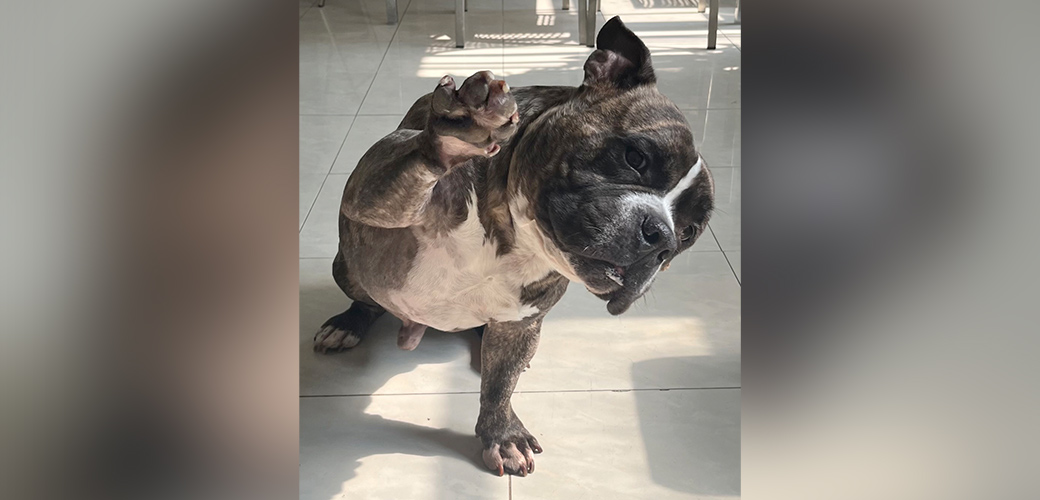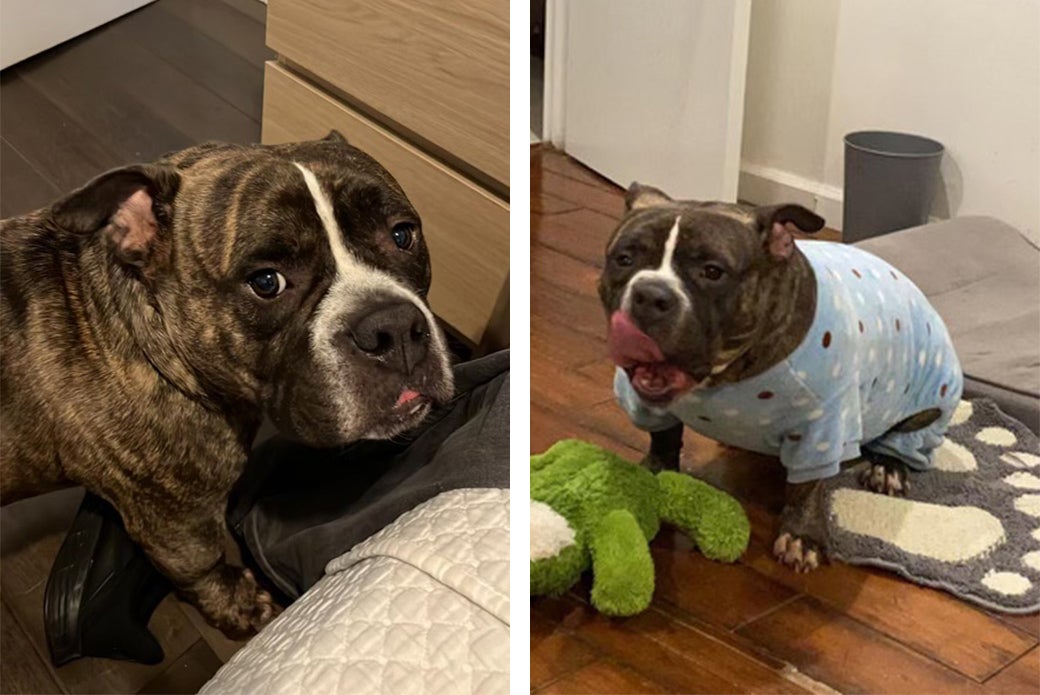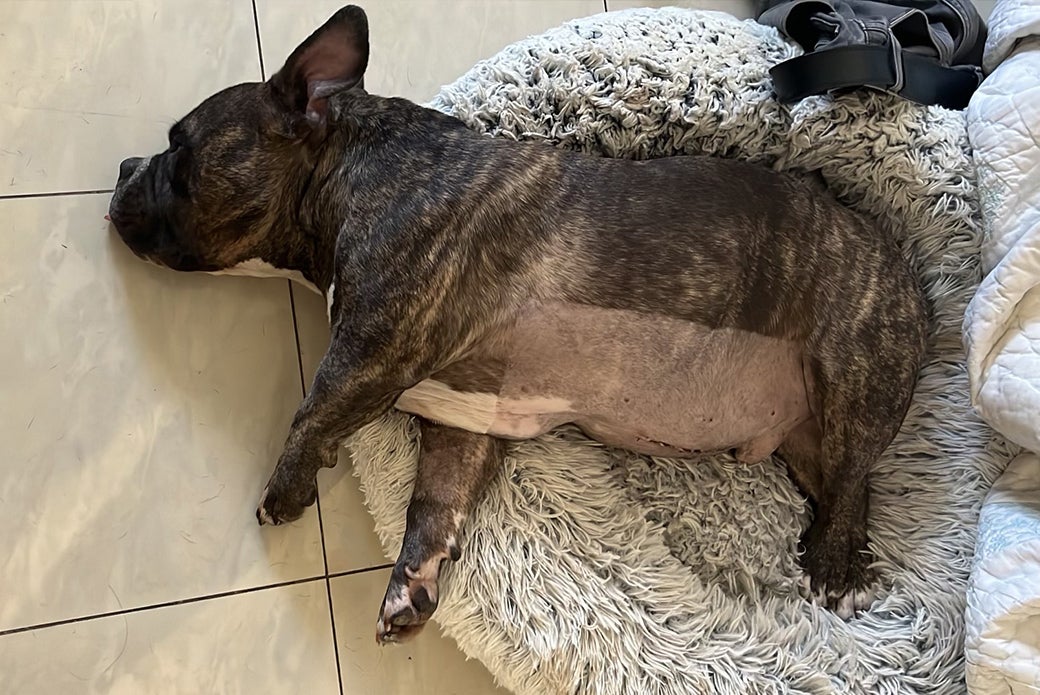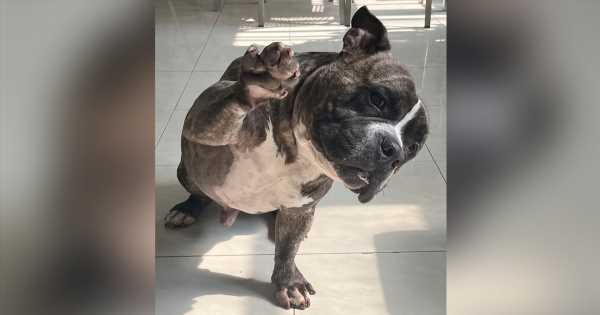

Rubber duckies have been a favorite children’s toy for decades. But one dog’s recent experience with the popular bathtime bauble was anything but fun in the tub.
In April, when Apo, a six-year-old American bully mix, had stopped eating and started vomiting, his pet parents, Oscar and Claudia, became concerned.
“He couldn’t keep any food or water down and had no energy,” says Oscar. “He was also trying to hide. Something was very wrong.”


Oscar took Apo to an emergency clinic where he was found to be in hypovolemic shock—so dehydrated that his blood pressure had dropped and his organs were not getting a proper supply of oxygen. Apo was treated with fluids, and an ultrasound revealed a possible object in his stomach.
Because the cost of emergency care was out of reach for Oscar and his family, a friend recommended they make an appointment for Apo at the ASPCA Animal Hospital (AAH), an urgent care facility that provides critical services for animals whose pet parents may be experiencing financial challenges.
“I was worried Apo might die,” Oscar says. “But once I got to the ASPCA, our luck started to change.”
A Squeaky Find
Dr. Marina Relman, a staff veterinarian at the AAH, examined Apo, noting that he was very lethargic.
“He didn’t even want to pick up his head,” Dr. Relman says. “His bloodwork showed severe electrolyte abnormalities consistent with a foreign body and his kidney values were elevated from being so dehydrated.”
The team performed an X-ray of Apo’s abdomen, and the results were unmistakable: A rubber duck was lodged in Apo’s small intestine.


“Sometimes in cases of foreign body obstructions, we have no idea what we’re going to find until we get in there,” says Dr. Relman. “In Apo’s case, the X-rays were so definitive, and the shape so recognizable.
Successful Surgery
Apo immediately went into surgery, where Dr. Julie DiMeglio and Carol Algarin, a Licensed Veterinary Technician, found the rubber duck stuck in Apo’s duodenum—small intestine—just past his stomach. Dr. DiMeglio cut into a healthy part of the duodenum where the toy hadn’t yet reached and pushed it out through the opening. Then she closed the hole.
“It was very tightly lodged,” says Dr. DiMeglio. “Apo was lucky he came to us when he did.”


A Common Crisis
The ASPCA Animal Hospital performed 121 foreign body surgeries in 2022 on dogs and cats, and 59 through May 2023. Foreign bodies are especially common in dogs, who can’t distinguish between tasty and treacherous.
“We often see corn cobs because their shape creates a plug in the intestines, making them hard to pass,” says Dr. Relman. “We also see a fair amount of hair clumps and random plastic parts.”
Cats are more apt to accidentally swallow smaller objects, like string or hair ties.
After a few days of fluid therapy, Apo regained his appetite and his bloodwork returned to normal.
Following veterinary instructions, Oscar and Claudia provided a cold compress to Apo’s incision for several days, and he was able to walk again two days after surgery.


“One for the Books”
Once home, Oscar set about uncovering where and how Apo found the toy. Oscar eventually learned the toy belonged to his grandson, Jacob, who loves to play with Apo and Luna, the family’s five-year-old Schnauzer, when he visits.
The ASPCA urges pet parents to dog- or cat-proof their homes to keep potentially damaging objects and small toys out of reach. They also recommend knowing what dangerous things their pets find appetizing, and covering or emptying wastebaskets that may contain objects that should not be ingested.


“It may seem funny now, but this was a nightmare,” says Oscar, who framed a copy of Apo’s X-ray.
“A rubber duckie swallowed whole—an X-ray for the books, for sure,” says Dr. Maren Krafchik, the hospital’s Director of Medical Operations.
Everyone is glad this “toy story” had a happy ending.
Source: Read Full Article
